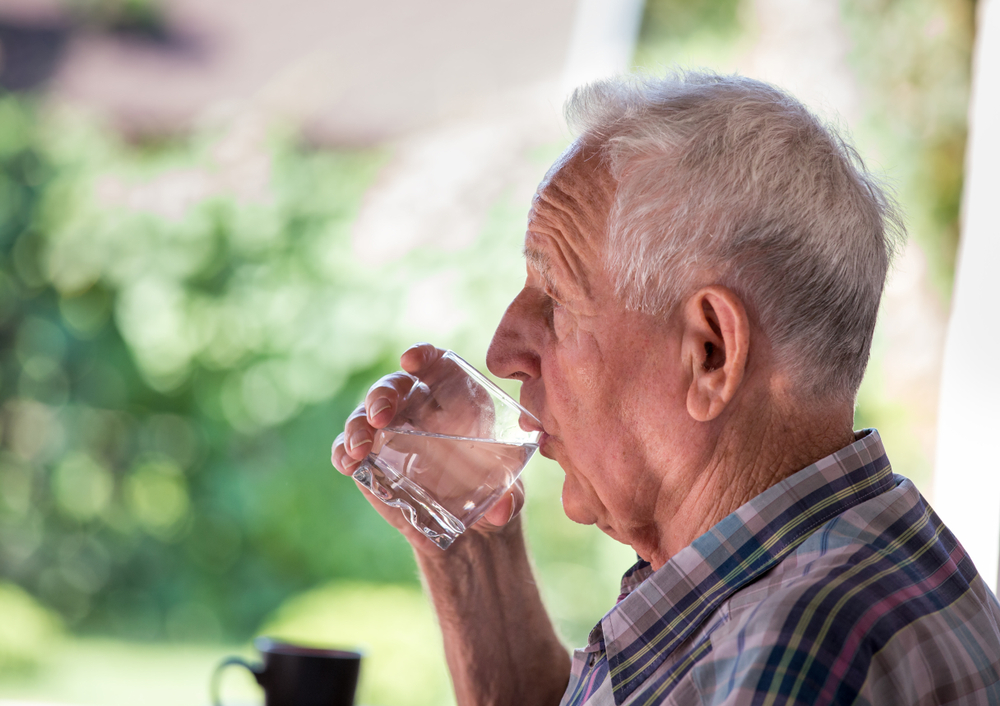Swallowing Problems in Elderly Adults
Category:

For most healthy adults, swallowing is reflexive, something you don’t have to think about. But after reaching a certain age, the elderly having trouble swallowing becomes quite common. It can also occur for many reasons, affect both liquids and solids, and may make swallowing painful or impossible.
Apart from having serious implications for a person’s quality of life, an inability to swallow food in elderly folks can pose serious health risks. But learning a few things about the difficulty in swallowing food in the elderly can help you figure out how to better navigate these kinds of issues with your loved ones.
Causes of Swallowing Problems in the Elderly
Why do the elderly have trouble swallowing? While anyone can develop swallowing problems (dysphagia), it’s far more common among the elderly, and mostly related to comorbidities. A complete list of possible causes of swallowing problems in the elderly spans an enormous range of potential issues, all the way from the muscles to the brain.
In most instances, dysphagia is related to problems with throat muscle. For example, achalasia is a condition affecting the lower esophageal sphincter which makes it more challenging to push down food. The issue might also be a diffuse esophageal spasm, which involves poorly coordinated esophageal contractions during swallowing.
And dysphagia can result from cancer in the area of the throat, and even non-cancerous esophageal tumors can cause dysphasia to become worse. Dysphagia can also result from radiation therapy, which may cause the esophagus to inflame, scar, or harden.
It can also result from problems that aren’t directly related to the throat. Neurological damage or neurological disorders, like Parkinson’s or muscular dystrophy, can lead to problems with swallowing. The issue can even be something as simple as poorly fitting dentures! That range of complexity is why it’s usually necessary to get a physician involved in addressing these kinds of problems.
Treating Inability to Swallow Food in the Elderly
Elderly having problems swallowing are often referred to a speech-language pathologist. They perform largely non-invasive tests like x-rays, imaging scans, dynamic swallowing studies, and endoscopies into the esophagus.
In instances of severe dysphagia, a feeding tube might be necessary to provide nutrition. Difficulty swallowing water in the elderly may also be addressed with a feeding tube or I.V. hydration. But most cases do not become that severe.
With moderate cases of dysphagia, a person can continue swallowing liquids, and a liquid diet may be the most appropriate. Sticking to foods that are easier to swallow, like chopped fruits and vegetables, can also help. And it may be necessary to avoid foods that are especially hard, crunchy, or sticky. For instance, big globs of peanut butter, chips, candy taffy.
An elderly person having trouble swallowing is at greater risk for a variety of health hazards, which means these kinds of problems are never trivial. Your doctor might suggest several small changes that can help, like improving posture during swallowing, or taking smaller bites of food. Depending on the source of their swallowing problem, people with dysphagia may also be prescribed physical therapy exercises to help coordinate muscles in the throat or stimulate the nerves related to swallowing.
Download Healthy Aging Diet Guide
Caring for Elderly with Swallowing Problems
Properly managed, mild dysphagia can be a minor lifestyle inconvenience. But if you experience symptoms like unexpected weight loss, difficulty swallowing, vomiting, recurring heartburn, food avoidance, pain from swallowing, or an inability to swallow, then you should schedule an appointment with a doctor.
Subscribe
Date: November 23, 2021
Category:


